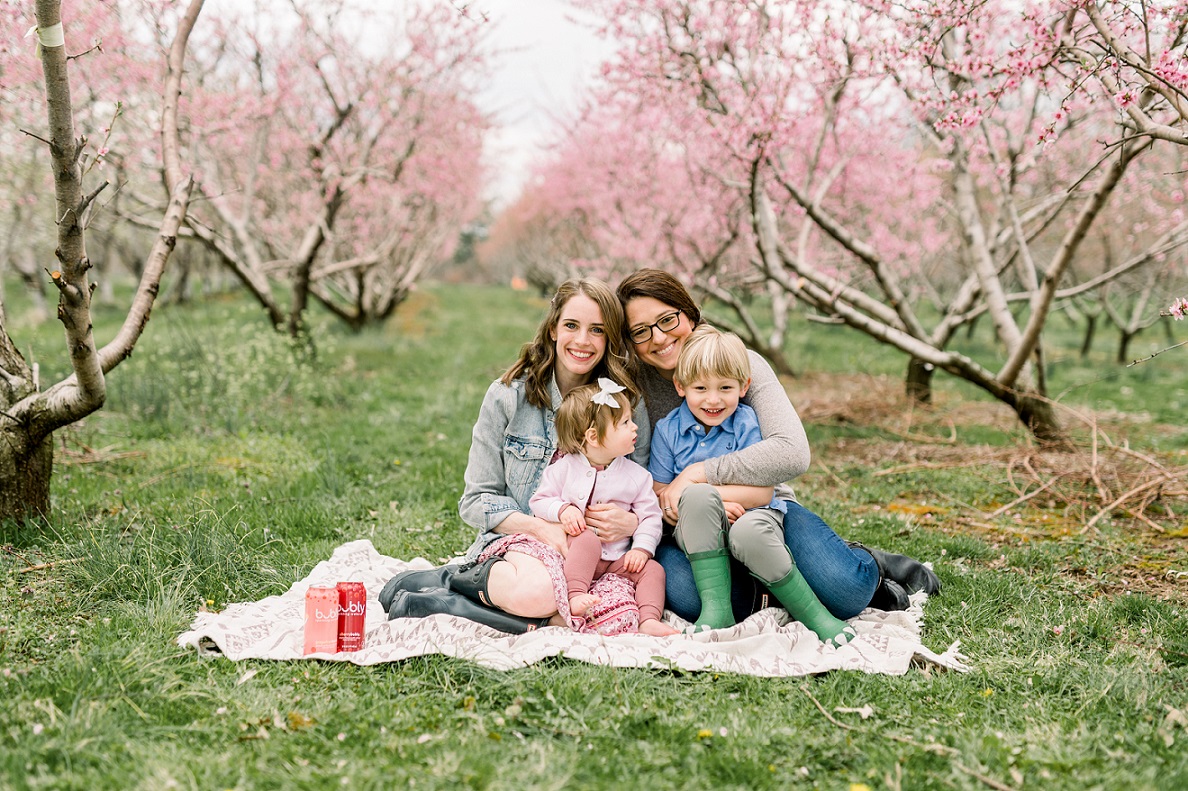Connecting Rainbows: Our Journey to Conception

I naively went into the process of creating a family thinking it would be simple. My wife, Jordana, and I didn’t have any known fertility issues. We were just two women who needed a bit of assistance.
The original plan was for each of us to undergo IUI (intrauterine insemination) with the same donor sperm so we each would have a biological child and they would be genetically connected. Both of us wanted to experience pregnancy and since Jordana is 3 years older than me, we planned that she would get pregnant first. Unfortunately, a series of events led to Jordana not being able to carry, and so I offered to carry her fertilized egg, a process known as reciprocal IVF or Co-IVF. Co-IVF has been the coolest, most incredible thing for our family. I was honored to carry a piece of my wife. It truly has allowed us both to feel part of our kids.
That’s when we encountered our first roadblock. During my initial testing to clear my body for pregnancy, they discovered a large cyst on one of my ovaries that needed to be removed before we could start the process. Hearing we would have to postpone our start date yet again after we had already delayed the process was so hard. Fortunately, we only had to pause for a short time following my procedure and a month later, I prepped my uterus while Jordana stimulated her ovaries to retrieve, we hoped, lots of eggs!
At the time, I was 30 years old and Jordana was 33. Fortunately, our first embryo transfer gave us our child, Parker.
Almost 2 years later, we decided to have Jordana go through another egg retrieval, and ultimately, we were rewarded with our second child, Josie!
Our story got more interesting following the birth of our children. Having access to reproductive technology like Co-IVF, allowed us to create our incredible family. However, by using donor material (the same applies if using sperm, egg, or embryo) it also prevented my wife from initially being considered the legal parent of her biological children.
While we could both go on the birth certificate, in the United States a birth certificate is an administrative document that does not grant any legal rights (and yes, this is for every single state in the U.S. as of the time this article is written). The legal parent is typically the gestational parent who carried the child, regardless of biology. Even though Jordana’s eggs were used to create our children, she did not physically carry them – I did. And so, she was not initially considered the legal parent. Jordana had to adopt Parker and Josie, her biological children, in order to be considered their legal parent.
While going through a second parent or step parent adoption is by no means required, it was an important act for us to complete. We felt it was imperative to protect our rights regardless of whatever might happen in the future.
Jordana and I decided to share our journey on social media and found that many individuals in the LGTBQ+ community were not aware of second parent adoption. Additionally, it turns out, a lot of lawyers were not familiar with the situation either. Family Formation law is a niched area, so I set out to help.
I founded connecting rainbows to provide legal and fertility resources to the LGBTQ+ community so they can start, grow, and protect their families. Our directory of lawyers houses attorneys who specifically specialize in family formation and/or estate planning and are well-versed in working with the LGTBQ+ community. Our directory of fertility clinics only lists clinics that come recommended from within the community to ensure that individuals will be treated equally, fairly, and compassionately. Finally, we have blogs and vlogs that have information from those who have experienced the fertility journey and members of the LGBTQ+ community with the goal of empowering others.
To learn more about connecting rainbows and the work we do, you can visit connectingrainbows.org.
